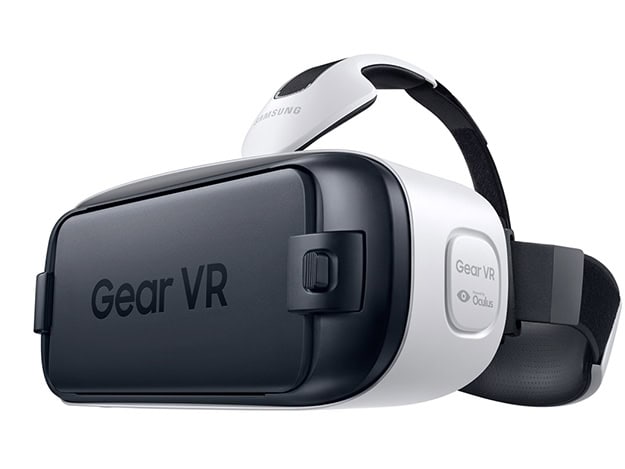Virtual reality (VR) has been the talk of 2016 and there are probably lots of people hoping for something VR related in the stocking this Christmas! The problem, however, with headsets such as the Oculus Rift and Playstation VR is that (apart from the fact they can make you feel nauseous!) they are pretty expensive. Unless you are a serious gamer or are always the first to splash out on the latest gadget then it’s difficult to justify the investment.
A good halfway house is available though – and at a fraction of the cost – by using your smartphone as the screen in a wearable virtual reality headset. The market leader here is definitely the Samsung Gear VR (which, as you might suspect, only works with a Samsung phone). If you have a S7 or S6, then all you need to do is place the phone inside the headset (pictured above) and play games, watch 360 degree videos and immersive yourself in content. It’s fair to say that the content is still a bit limited at the moment, but for less than £70 it’s definitely worth a try.
One thing which you need for VR on your phone to be worth anything is a good screen resolution. Because the screen is being placed closed to your eye, a low resolution screen will only show up the pixels – I found this when using Google Cardboard with a 1280 x 720 pixel resolution screen. It was okay, but with my Samsung S7 at 2560 x 1440 pixels it is much, much more impressive.
Google cardboard, I hear you say? What’s that? Well, it’s…cardboard. For £15 you have the most basic of viewers, which you place your phone in and hold the cardboard viewer to your face. You can play quite a few games (available in the Play store) although any with with a rollercoaster just makes me feel sick. The two things I like are the cardboard camera – which lets you take a 360 degree photo with sound and then view in virtual reality in the headset – and Google street view which is completely immersive.
Cardboard’s downside is that it is just a bit of …cardboard. Recently launched is its successor, Google Daydream. Still sub-£100, but with a comfortable holder and strap to wear about your face and a hand held controller. The downside? It’s only compatible currently with a small number of phones, which unsurprisingly but frustratingly includes Google Pixel, but doesn’t include Samsung or Apple.
Still, if you’re thinking about VR it’s worth considering how you can use your phone before you buy an expensive headset!


